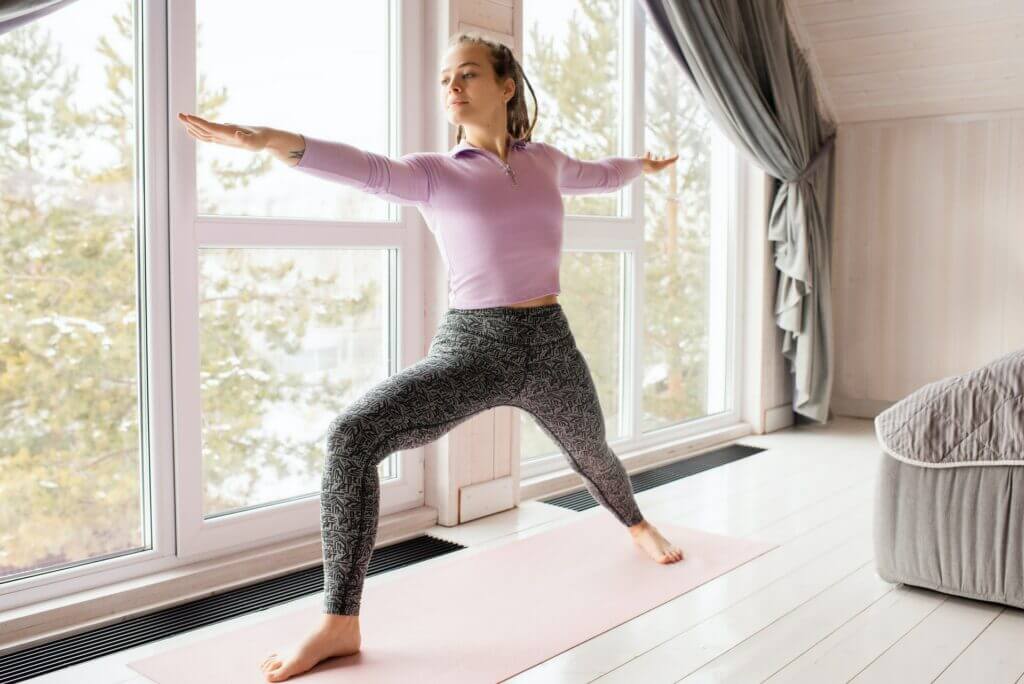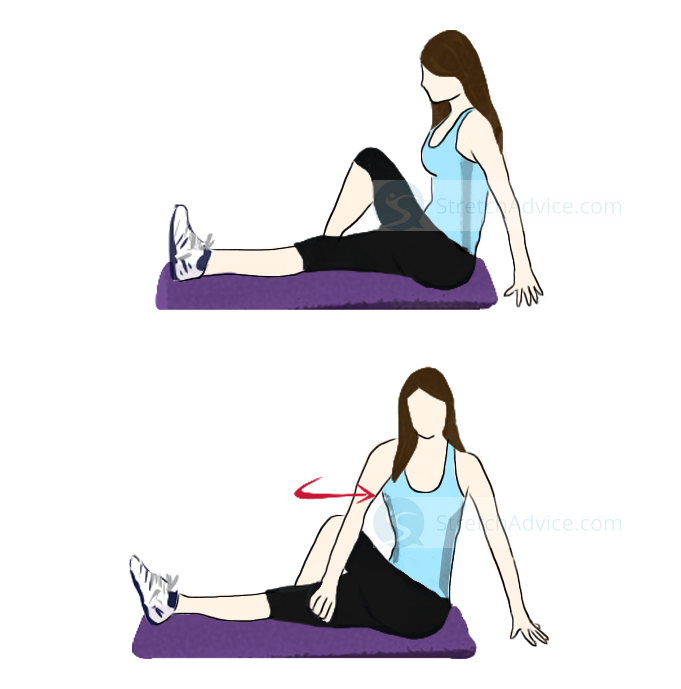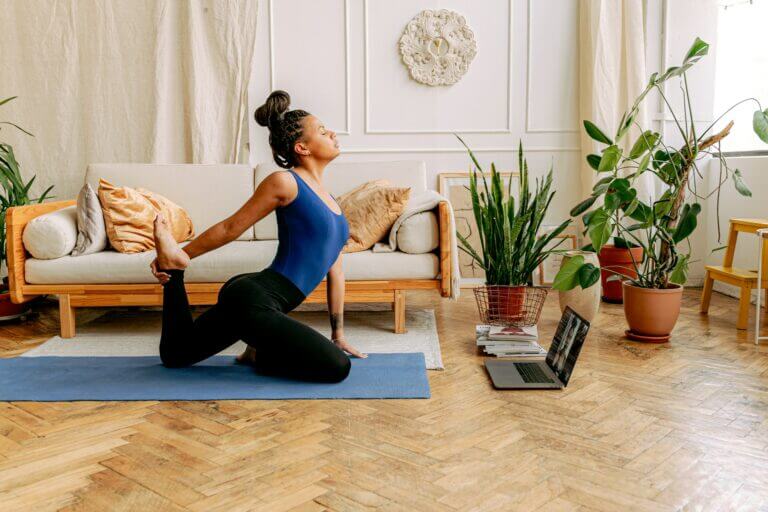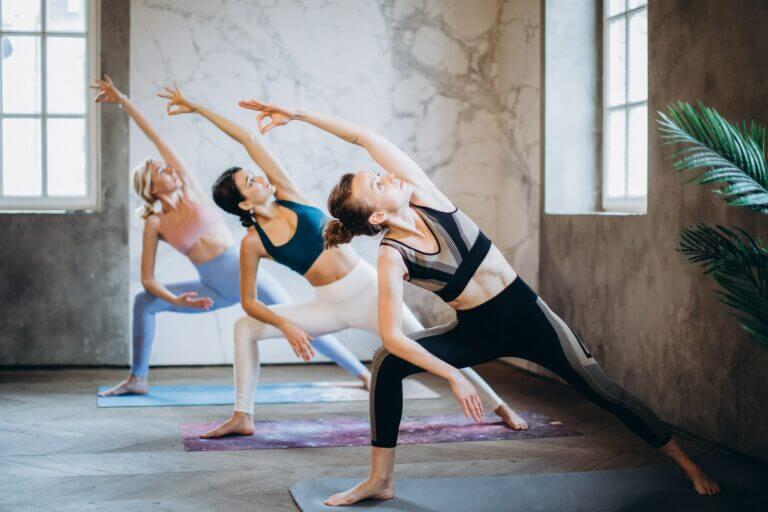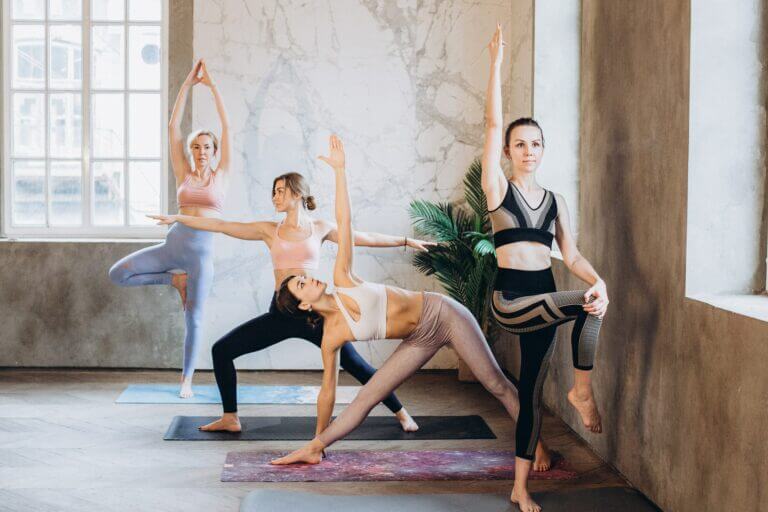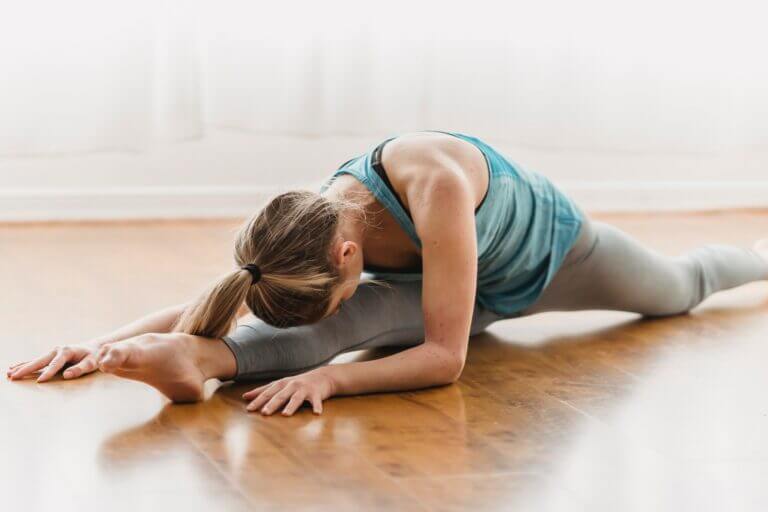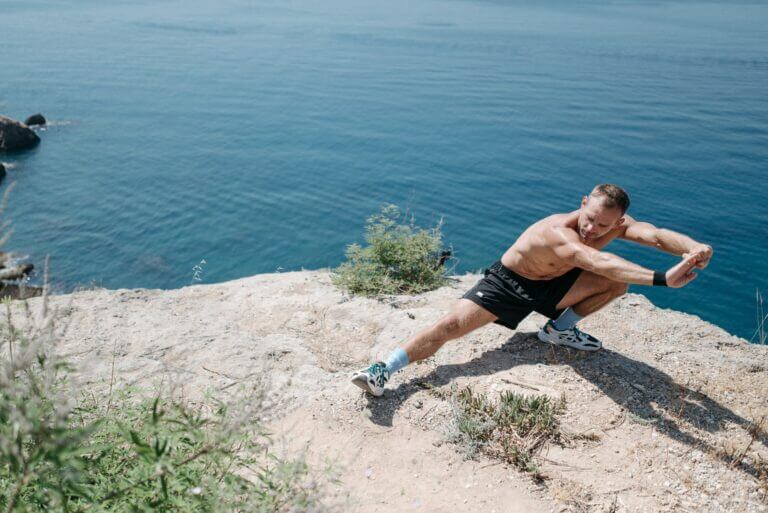You may be new to stretching, and you’ve heard that stretching is good. Some have even told you that their quality of life has improved so much because they stretch each day.
You’ve scrunched up your nose at that.
What a bold statement!
Still, your curiosity is piqued, so you decide to Google it.
That search brings you to this article.
Without further ado, read on to find out the importance of stretching, 8 ways stretching regularly can benefit you personally, and 6 stretching exercises you can do at work.
8 Health Benefits of Stretching
Listed below are several health benefits you can gain by setting aside time for stretching on a regular basis. Even just a few minutes of stretching after a workout can help you increase your freedom of movement and perform everyday activities with ease.
1) Improves Blood Circulation
Both dynamic and static stretching increases blood flow in your body, increasing the amount of oxygen that gets delivered to your muscles. Your muscles tend to be underused and cold when stuck with office work, so it will also warm up cold muscles to prepare them for exercise. This means your heart will be stronger and healthier!
2) Freshen Up Your Morning
After a good night’s rest, your muscles are bound to be a little stiff because you haven’t been moving a lot in your sleep. Like the furry dogs and cats that streeeeeeeetch whenever they wake up from a nap, stretching first thing in the morning is a great way to ready yourself for the day.
3) Improves Flexibility & Range of Motion
With a consistent routine, stretching can maintain and increase your flexibility, allowing an increase in your range of motion. This is especially important because you’ll slowly lose your flexibility as the years fly by.
4) Reduces Risk of Injury
Research has shown that stretching can help improve your flexibility. After a good round of dynamic stretching, your muscles are now well-prepared for the intense and grueling workout session or exercise program you have planned. However, this doesn’t mean that you are invincible. You’ll still get hurt if you overexert yourself, so just be careful, yeah?
5) Improves Posture
You’ll need to consistently check that your posture and form are correct when stretching, so maintaining a proper posture will soon be embedded into your bones. Ha! Bones and posture, get it? It’s said that stretching can be a great way to keep the muscles in the back strong and healthy.
6) Provides Emotional Balance
You can take it slow during your stretches, allowing time for your mind and body to relax. This is your personal time, the time to focus on yourself. By doing so, you’ll be able to find inner peace even amongst the stress of life. That’s why it’s a good idea to stretch before bed, as stretching provides time for yourself.
7) Relieves Muscle Pain
Muscle pain is usually caused by tight muscles, and stretching helps to loosen them. You need that flexibility to maintain movement in your body. This way, you’ll be able to give your muscles a break and relieve yourself from a sore, aching back.
8) Improves Mood and Focus
Stretching involves discipline, and in line with the point about emotional balance mentioned above, stretching can help regulate your emotions by allowing some time for yourself. You won’t feel as stressed about things that are out of your control, so you’ll be able to focus better on your work and hobbies. It’s a good idea to maintain self-discipline when it comes to self-care.
6 Stretches Techniques To Try To Increase Blood Flow
Listed below are six easy stretches you can perform everyday for 5 to 10 minutes as part of your regular stretching routine.
You could do them before or after your exercise routine and physical activities, helping to improve blood flow to the muscles of your body, help improve flexibility, and reduce overall health problems.
Be careful not to overstretch or keep on stretching the same muscle groups, because that can lead to negative effects instead.
1) Seated Torso Stretch
This stretches the muscles in your lower back and reduces lower back pain, a common sore spot. This stretch can help increase your range of motion.
- Sit on the floor, or a yoga mat—if you have one.
- With your left leg extended straight in front of you, bring your right leg and cross it over your extended leg.
- Place your right hand flat on the floor for support, then place the elbow of your left arm on your knee.
- Twist! Gently use your elbow to anchor yourself as you twist your back muscles forward.
- Hold this position for 15 to 20 seconds before relaxing for 10 seconds.
- Switch legs and twist to the other side.
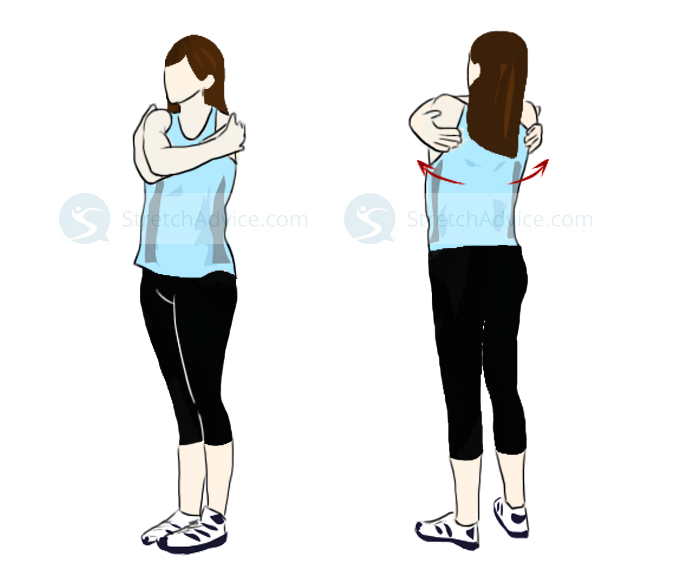
2) Bear Hug
This regular stretch touches the muscles and joints of your arms and shoulders, especially the ones in your upper back.
- Stand up nice and tall, making sure your form is correct and your back is straight.
- Open your arms wide before you.
- Cross your arms around you, reaching over to place your hands just beneath your shoulders.
- Breathe deeply as you push your shoulders forward using your hands.
- Hold this position for 20 to 30 seconds.
- Slowly release your hands and relax your arms.
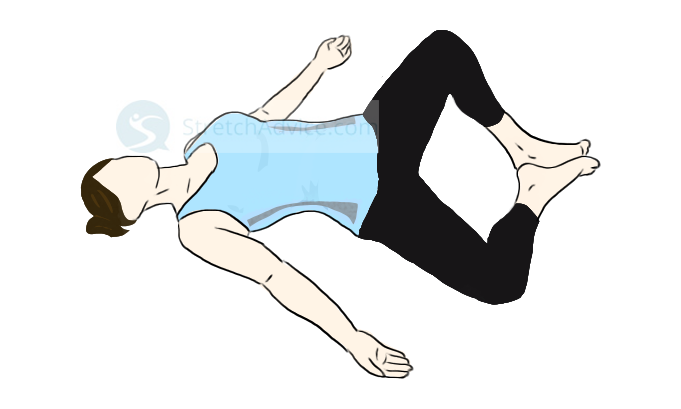
3) Reclining Bound Angle Pose
This form of stretching opens up your hip flexors, relieving tension caused by sitting all day long.
- Sit down on the floor and fold your legs in, pressing the soles of your feet against each other.
- Slowly raise both arms in the air and lean back, resting your upper torso on the floor.
- Focus on relaxing the muscles in your hips and thighs. Don’t forget to breathe!
- Hold this position for a while, preferably from 5 to 8 minutes.
Pro-tip: You can reflect on the things that happened during the day or plan for the next day while doing this.
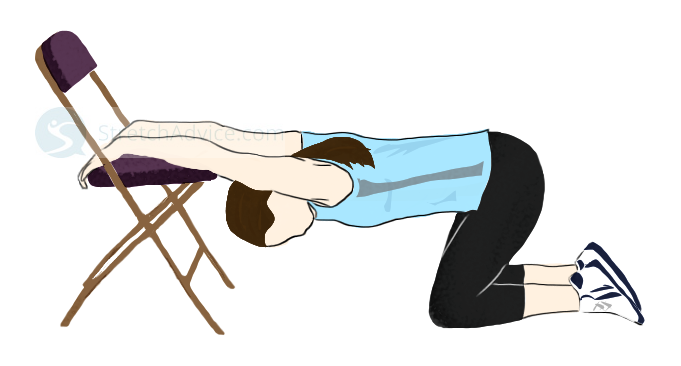
4) Kneeling Lat Stretch
This keeps the muscles in your back and shoulders soft and flexible—one of the most common places where people suffer muscle pain.
- You’ll need a chair or any piece of furniture that is low enough for this.
- Kneel before your chair, making sure that your knees are aligned with your hips.
- Bend forward and place your forearms on the chair, with your palms facing down.
- Hold this position for 20 to 30 seconds.
- Relax and rest for 10 seconds, then repeat it 2 more times.
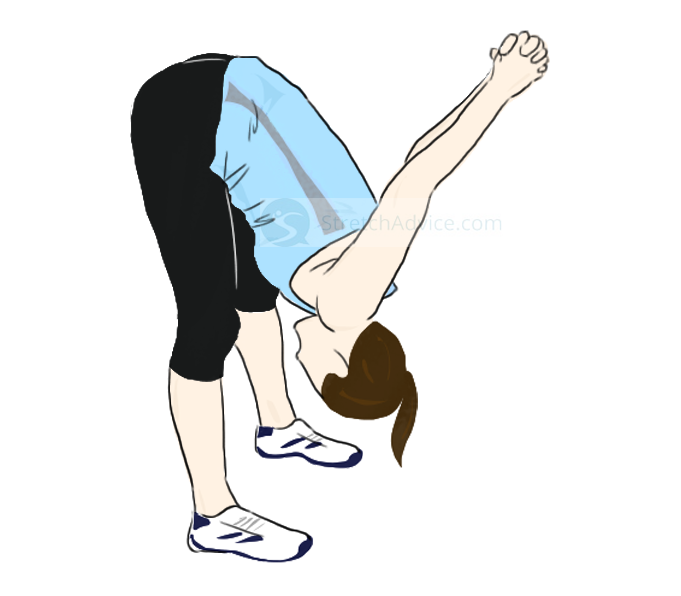
5) The Forward Hang Stretch
This relaxes the muscles in your back, hamstrings, your arms, and increases your flexibility to maintain a range of motion.
- Stand up straight, backs straight. Make sure your feet are hip-width apart and your knees are slightly bent.
- Bring your hands behind your back and interlace your fingers.
- Bend at your waist and lean forward. Your arms should naturally be raised in the air as you bend forward.
- Hold this position for 10 to 15 seconds.
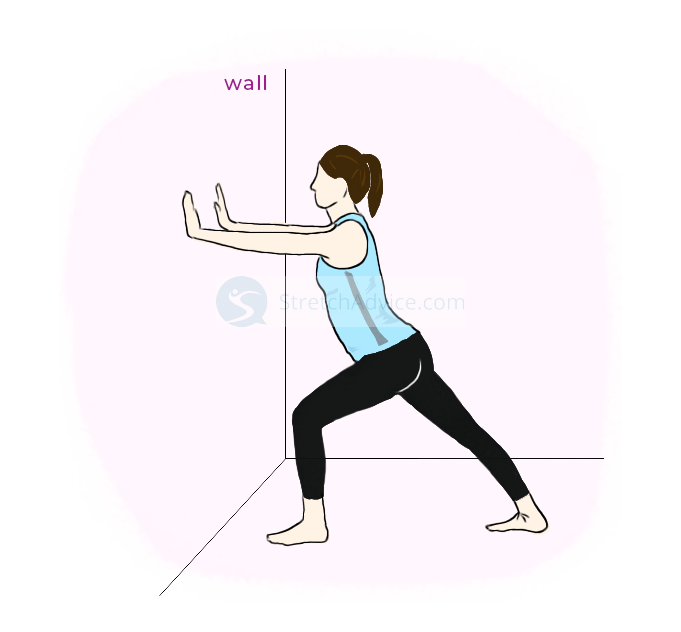
6) Standing Calf Stretch
This stretch focuses on your calf muscles and your ankles.
You’ll need a sturdy surface you can lean on for this stretch.
- Stand in front of the wall, then place the palm of your hands flat on the surface.
- Take a step backward with one foot, so the other leg has to bend at the knee.
- Gently lean your upper torso forward, putting pressure on the back leg.
- Make sure that the foot of your back leg is flat against the floor. You should feel a bit of tension in your ankle and your calf.
- Hold this position for 10 to 20 seconds.
- Switch to the other leg.
The Takeaway
When all is said and done, there are many benefits to be gained through stretching.
Whether you stretch every day, or just twice a week, the important thing is to be consistent. Make a plan, and stick to it!
That way, you’ll be able to fully benefit from stretching.
But, if anything starts to hurt suddenly when you move, stop stretching immediately and visit your local doctor or physical therapist. These healthcare professionals will help you identify what happened and what you should do going forward. You should also be careful when it comes to ballistic stretching, because if you aren’t, you might end up hurting your muscles instead of benefiting from them.
Try visiting an exercise physiologist to get a recommended stretching program custom tailored to suit your body’s needs. They can give you many tips for stretching in a way that can ready your muscles for activity.
Cheers to a more flexible future!

